Made this for a quick afternoon snack and it was a hit. The sesame oil gave the edamame a nice richness, and the hint of soy sauce was just right.

It's time to get up close and personal with a snack that's taken the world by storm - Edamame! Dive into the world of flavor with this Garlic Edamame recipe! It's simple, it's easy, and most importantly, it's delicious. Starting with wholesome, protein-packed edamame, we're going to jazz it up with some basic yet powerful ingredients - garlic, dried red chili, sesame oil, and soy sauce.
The garlic, finely minced, lends its unique pungent aroma that makes this dish so addictive. Add in the dried red chili, and you've got that fiery kick to balance out the robust flavors. Then comes the sesame oil, which not only helps in frying but also adds its own unique nutty flavor.
Once these stars align in the pan, in goes the edamame. But we're not done yet! A sprinkle of salt and a generous drizzle of soy sauce take this snack to the next level, making sure the edamame are well-seasoned and packed with flavor.
This Garlic Edamame is not just any snack. It's a quick fix for those sudden hunger pangs, a tasty appetizer for your next party, or a simple dish to satisfy your late-night cravings. No fancy ingredients, no complicated steps. Just a simple, tasty dish that you can whip up in no time. Now, let's get cooking!
JUMP TO:
INGREDIENTS:
Edamame Selection: Edamame is the star ingredient of this dish, so selecting good quality beans is key. Since you're using frozen edamame, look for packages where the beans appear whole and vibrant in color through the transparent parts of the bag. Avoid bags with a lot of frost or ice crystals, as this might suggest the edamame has been stored for a long time or thawed and refrozen.
Sesame Oil Quality: Sesame oil adds a distinct nutty flavor to this dish. For the best taste, opt for pure, high-quality sesame oil. Cold-pressed varieties retain the most flavor and nutrients. Keep in mind that sesame oil has a low smoke point, so it's best used for low-heat cooking or finishing dishes.
Soy Sauce Varieties: As we've previously discussed, soy sauces can vary greatly in terms of flavor profile, saltiness, and thickness. For this dish, a lighter soy sauce would work well, as it won't overpower the delicate flavor of the edamame.
Dried Red Chili Selection and Use: Dried red chilies add a nice heat to this dish. There are many varieties of dried chilies, and each one has its own level of heat and flavor nuances. Cayenne or Arbol chilies could work well in this recipe, but always adjust the quantity based on your heat tolerance. Remember to handle them carefully, as the oils can irritate the skin and eyes.
MAIN STEPS:
Proper Garlic Preparation: When preparing your garlic, pay attention to the mincing process. This method involves cutting the garlic into very small pieces to maximize the surface area exposed, thus releasing more flavor. However, over-mincing can result in a bitter taste, so aim for consistency and don't go too fine.
Handling Dried Red Chili: Dealing with dried red chili requires some care. Ensure you're chopping them in a well-ventilated area, as the dust can cause coughing or sneezing. Also, it's best to wash your hands immediately after handling chilies to avoid any accidental contact with sensitive areas like the eyes.
Cooking Edamame: The edamame is cooked quickly in the flavorful oil, only requiring a few minutes. The purpose is to heat them through and impart them with the garlic and chili flavors. Overcooking can result in soft, mushy edamame, so keep an eye on the pan and stir continuously to ensure even heat distribution.
Seasoning Balance: The final seasoning with salt and soy sauce requires a balance. Since both contain sodium, it's important to adjust the amount of salt added to avoid making the dish too salty. Always remember that it's easier to add more salt later than to correct an overly salted dish.
SERVED WITH:
Appetizer: Vegetable Spring Rolls (China): Crispy, crunchy spring rolls filled with vegetables make for a great appetizer before a meal. The fresh and light flavor of these spring rolls complements the robustness of the garlic edamame.
Soup: Miso Soup (Japan): This classic Japanese soup is made with miso paste, tofu, and seaweed. Its umami-rich, soothing flavor makes it a perfect companion to the bold, spicy taste of garlic edamame.
Main Course: Bibimbap (Korea): A comforting Korean rice dish mixed with assorted vegetables, meat, and a spicy gochujang sauce. The flavors of the garlic edamame would add an interesting depth to the varied ingredients in bibimbap.
Side Dish: Sauteed Bok Choy (China): This mild-tasting leafy green stir-fried with a hint of garlic will balance out the strong flavors of garlic edamame.
Second Course: Sushi Platter (Japan): An assorted sushi platter provides a variety of flavors and textures, from fresh and light to rich and savory. The spicy and savory garlic edamame would act as a palate cleanser between different types of sushi.
Dessert: Matcha Ice Cream (Japan): This creamy, slightly bitter dessert would help balance the heat from the garlic edamame, providing a cool and sweet end to the meal.
Drink: Sake (Japan): This traditional Japanese rice wine has a light, slightly sweet flavor that would complement the spiciness of the garlic edamame. It's usually served either chilled or warm, depending on personal preference and the time of year.
ALTERNATIVES:
Appetizer: Chilled Edamame Hummus (Middle East): A fun twist on traditional chickpea hummus. By pureeing edamame with garlic, olive oil, tahini, and a bit of lemon juice, you get a vibrant and nutritious spread that pairs well with pita bread or vegetable sticks.
Soup: Edamame and Garlic Soup (United States): An innovative take on vegetable soup, combining the creaminess of pureed edamame with the aromatic flavor of garlic. It's a filling, healthy choice for a starter or main course.
Main Course: Garlic Edamame Spaghetti (Italy): A fresh take on traditional Italian pasta. Spaghetti is tossed with a sauce made from sautéed garlic, pureed edamame, and a touch of chili flakes for heat.
Side Dish: Edamame and Garlic Stir-fried Rice (China): A healthier take on classic fried rice. The dish incorporates edamame and garlic into the rice for a protein-packed side dish that's flavorful and satisfying.
Second Course: Garlic Edamame Tacos (Mexico): A fusion dish where traditional Mexican tacos are filled with garlic sautéed edamame and topped with spicy salsa and avocado, adding a vegetarian option to taco nights.
Dessert: Edamame and Matcha Mochi (Japan): A sweet Japanese dessert where the chewy rice cake (mochi) is filled with a sweet edamame paste. The matcha (green tea powder) gives it a distinctive color and flavor.
Drink: Edamame Smoothie (United States): Blending edamame with banana, spinach, and a hint of garlic creates a surprisingly delicious and nutrient-packed smoothie. Perfect for a quick breakfast or a post-workout snack.
HISTORY:
Edamame, a dish featuring immature soybeans in the pod, is a staple of Japanese cuisine. Boiled or steamed and lightly salted, edamame is often enjoyed as a snack or a complementary side dish in traditional Japanese meals. However, the dish we know today as Garlic Edamame is a relatively recent development in the long history of edamame.
Edamame itself dates back to as early as the 8th century in Japan during the Nara period, mentioned in the agricultural text named the "Noumin-ron". This treat became popular as an accompaniment to tea, served in places like tea gardens. It also held cultural significance during the annual Buddhist Obon festival, where it was part of the offerings made to ancestors.
Garlic, on the other hand, is not originally a native ingredient in Japanese cuisine, having its roots in Central Asia and Middle East. Despite its relative novelty in Japanese cuisine, garlic found its place in the country's rich culinary tapestry through Chinese and Korean influences and Western-style (Yoshoku) dishes.
The Garlic Edamame recipe seems to be a testament to the increasingly global influences in Japanese cuisine. The dish became more popular as people began to appreciate the unique flavor that garlic could add to the otherwise simple edamame. While the exact origin of the Garlic Edamame recipe is unclear, it is likely the result of chefs and home cooks experimenting with different ways to enhance the flavor of traditional dishes.
Today, Garlic Edamame is served in izakayas (Japanese pubs) and restaurants worldwide, representing a perfect blend of the classic Japanese edamame with an international twist.
TIPS:
Use of Fresh Edamame: If you have access to fresh edamame, consider using them over frozen for better texture and flavor.
Blanching Edamame: For an enhanced flavor, blanch edamame in salted water before sautéing. This step can help to maintain the vibrant green color and improve their taste.
Garlic Technique: Use a microplane grater to mince the garlic, which can create a paste-like consistency that distributes better in the sauce.
Toasting Spices: Toast the chopped dried chili in the pan before adding the oil to awaken the oils and enhance the flavors.
Addition of Umami: For an even deeper flavor, a small amount of miso paste or a splash of fish sauce can be added with the soy sauce to amplify the umami.
Recipe Information
Skill Level
|
Time 15 Minutes |
Price
|
Serves 1 to 8 People |
| Healthiness |
Nutritional Information |
| Ratings (Add Rating & Review) |
Reviews 17 Reviews |
Ingredients:
-
1.5 cups Frozen Edamame in Pods
( defrosted )
1 tablespoon Sesame Oil
1 teaspoon Soy Sauce
1 Clove Garlic
0.25 teaspoon Salt
1 Dried Red Chili
Allergens
| Sesame | Soy |
Directions:
01 - Prepare the Garlic: Start by finely chopping your Garlic. This is called mincing, and it helps release the flavors of the Garlic more effectively. Once minced, set it aside for later.
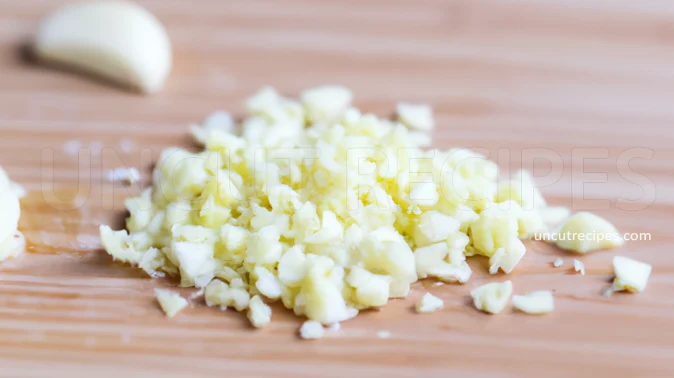
02 - Prepare the Dried Red Chili: Cut the Dried Red Chili in half and remove the seeds, then chop the Dried Red Chili just like the Garlic. Set it aside with the Garlic.

03 - Now, we're ready to heat things up. Put the Oil in a pan and add the minced Garlic and Chili that you've set aside. The heat will start to bring out their flavors, forming the base of your dish.
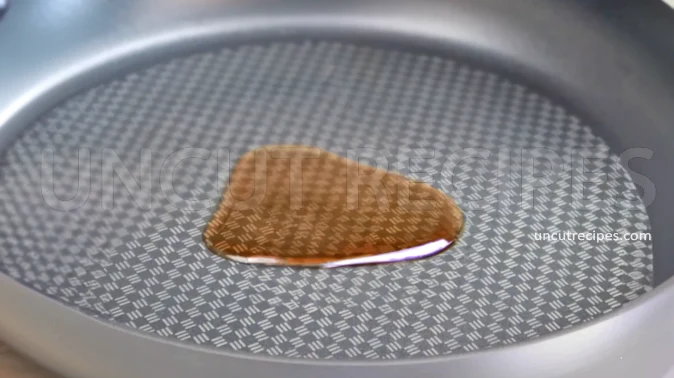
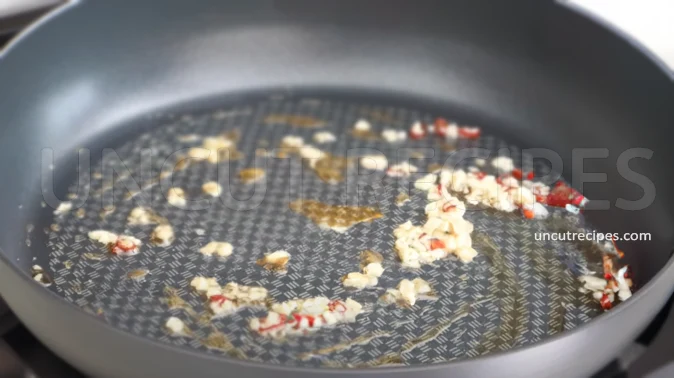
04 - Add the Edamame: Stir the Edamame in the pan with the Garlic and Chili, making sure they get well coated in the Oil. Fry everything together for about 3 minutes. This process will heat the Edamame through and get them nice and flavorful.
05 - For the final touch, sprinkle some Salt over your Edamame and drizzle in some Soy Sauce. Stir everything together one last time, ensuring the Edamame are well-seasoned.
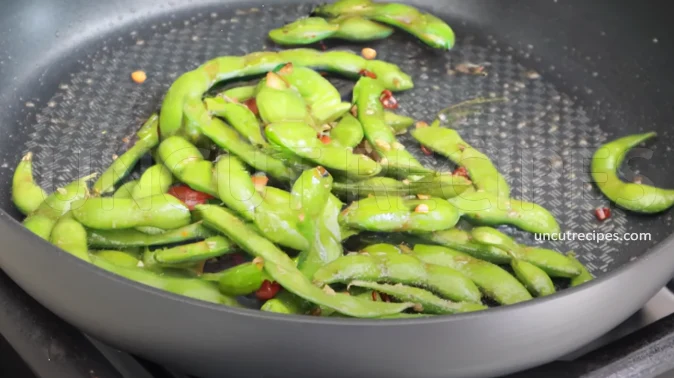
06 - Done! Your Garlic Edamame is ready to enjoy. Serve it up right away while it's still hot for the best flavor.
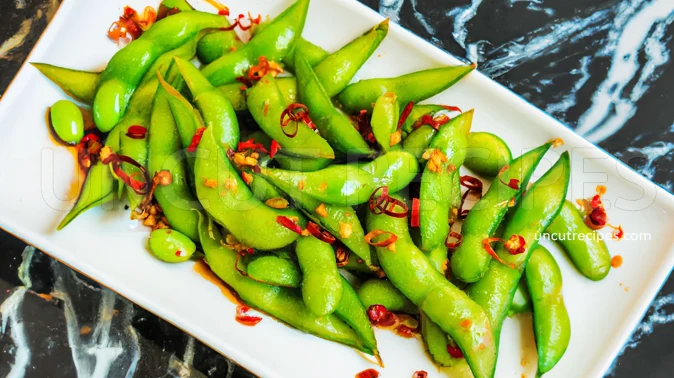
Notes:
Edamame: The recipe calls for frozen edamame in pods. If you only have shelled edamame available, you can use that too, but be aware that the flavor will be absorbed directly into the beans rather than the pods.
Preparing the Garlic and Chili: To get the maximum flavor out of your garlic and dried red chili, consider using a mortar and pestle to crush them before frying.
Sesame Oil: Sesame oil gives a distinctive flavor to this dish, but if you don't have any on hand, you can substitute with canola or olive oil.
Soy Sauce: Soy sauce adds a savory umami flavor to the dish. For a gluten-free alternative, you can use tamari. For a soy-free alternative, consider using coconut aminos.
Storage: This dish is best served fresh, but if you have leftovers, they can be stored in an airtight container in the refrigerator for up to 3 days. Reheat in the microwave or in a pan over medium heat.
Nutrition: Edamame are high in protein and fiber, making this a nutritious snack or side dish.
Adding More Flavor: If you want to add more flavor, you could add a sprinkle of sesame seeds or a splash of rice vinegar at the end.
Edamame Buying Tips: When buying frozen edamame, make sure there's no ice buildup inside the bag as this can indicate that the edamame have been thawed and refrozen.
Freezing: If you've bought fresh edamame and want to freeze them for later use, simply blanch them in boiling water for a few minutes, let them cool, then freeze in a zip-top bag.
Nutritional Information
( Per Portion )
|
Calories |
170 kcal (8.5%) |
| Total Carbohydrate | 11g (4%) |
| Cholesterol | 0mg (0%) |
|
Total Fat |
9g (11.6%) |
| Saturated Fat | 1g (5%) |
| Polyunsaturated Fat | 3g |
| Monounsaturated Fat | 4g |
| Trans Fat | 0g |
| Fibers | 5g (17.9%) |
| Protein | 14g (28%) |
| Sugar | 2g (8%) |
|
Vitamin A |
30 IU (1%) |
|
Vitamin B1 (Thiamin) |
0.2mg (16.6%) |
| Vitamin B2 (Riboflavin) | 0.1mg (7.7%) |
| Vitamin B3 (Niacin) | 1mg (6.25%) |
| Vitamin B5 (Pantothenic Acid) | 0.6mg (12%) |
| Vitamin B6 | 0.1mg (5.9%) |
| Vitamin B7 (Biotin) | 15mcg (50%) |
| Vitamin B9 (Folate) | 130mcg (32.5%) |
| Vitamin B12 | 0mcg (0%) |
| Vitamin C | 10mg (11%) |
| Vitamin D | 0 IU (0%) |
| Vitamin E | 0.4mg (2.7%) |
| Vitamin K | 25mcg (20.8%) |
| Choline | 50mg (9.1%) |
| Carnitine | 0mg (0%) |
|
Calcium |
70mg (7%) |
|
Chloride |
0mg (0%) |
| Chromium | 0mcg (0%) |
| Copper | 0.25mg (27.8%) |
| Fluoride | 0mcg (0%) |
| Iodine | 0mcg (0%) |
| Iron | 2.5mg (13.9%) |
| Magnesium | 60mg (14.3%) |
| Manganese | 1mg (43.5%) |
| Molybdenum | 0mcg (0%) |
| Phosphorus | 200mg (16%) |
| Potassium | 500mg (10.6%) |
| Selenium | 7mcg (12.7%) |
| Sodium | 300mg (13%) |
| Sulfur | 0mg (0%) |
| Zink | 2mg (18.2%) |
* Percent Daily Values are based on a 2,000 calorie diet. Your daily values may be higher or lower depending on your calorie needs.
** Nutrient information is available for all ingredients in this recipe. Amount is based on available nutrient data collected from all over the internet.
(-) Information is not currently available for this nutrient. If you are following a medically restrictive diet, please consult your doctor or registered dietitian before preparing this recipe for personal consumption. |
| Written by: Uncut Recipes | Disclaimer |


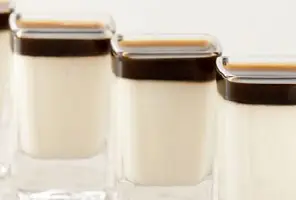

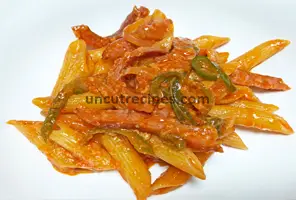
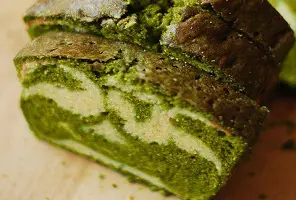
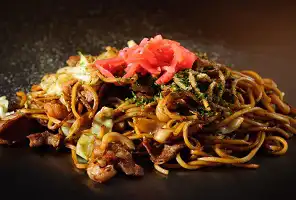







August 05, 2023
This garlic edamame recipe is a real winner! My kids, who are not the biggest fans of veggies, just couldn't get enough. The garlic and chili brought a whole new level of flavor.